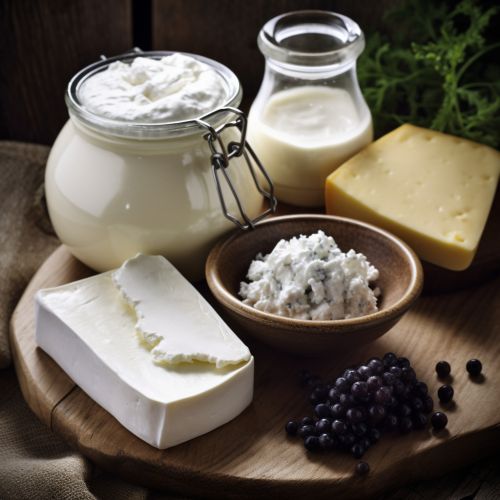Fermentation in Food
Introduction
Fermentation in food is a metabolic process that converts sugar to acids, gases, or alcohol. It occurs in yeast and bacteria, and also in oxygen-starved muscle cells, as in the case of lactic acid fermentation. The science of fermentation is known as zymology.
History
The use of fermentation, specifically for food preservation, is an ancient practice. Historical evidence suggests that early civilizations were using fermentation as early as 6000 B.C. to produce beer and wine. The process was also used to leaven bread and produce dairy products like cheese and yogurt.
Types of Fermentation
There are three main types of fermentation:
1. Lactic Acid Fermentation: This is the process by which lactose, a sugar in milk, is converted into lactic acid. The process is carried out by lactic acid bacteria, and results in products like yogurt and cheese.
2. Ethanol Fermentation: Also known as alcoholic fermentation, this process converts glucose into ethanol and carbon dioxide. It is used in the production of alcoholic beverages and bread.
3. Acetic Acid Fermentation: This process converts ethanol into acetic acid, resulting in products like vinegar.
Fermentation in Different Foods
Dairy
In dairy products, fermentation is used to produce cheese, yogurt, and other products. The process involves the conversion of lactose into lactic acid by lactic acid bacteria. This not only preserves the dairy product, but also gives it a unique taste and texture.


Bread
In bread making, fermentation is used to leaven the dough. Yeast, a type of fungi, is used to ferment the sugars in the dough, producing carbon dioxide and ethanol. The carbon dioxide gas forms bubbles in the dough, causing it to rise.
Alcoholic Beverages
In the production of alcoholic beverages, fermentation is used to convert sugars into alcohol. This is done by yeast, which consumes the sugars and produces alcohol and carbon dioxide as byproducts.
Pickled Vegetables
In pickled vegetables, fermentation is used to preserve the vegetables and enhance their flavor. The process involves the conversion of sugars in the vegetables into lactic acid by lactic acid bacteria.
Benefits of Fermented Foods
Fermented foods are known for their health benefits. They are rich in probiotics, beneficial bacteria that promote gut health. They also aid in digestion and absorption of nutrients. Additionally, fermented foods are known to boost the immune system and reduce the risk of certain diseases.
Risks and Considerations
While fermented foods have many benefits, there are also some risks and considerations. Some people may experience bloating and gas due to the high fiber content in fermented foods. Additionally, some fermented foods are high in sodium, which can contribute to high blood pressure. It is also important to note that not all fermented foods are created equal. Some commercially produced fermented foods may not contain the same level of probiotics as traditionally fermented foods.
Conclusion
Fermentation in food is a complex and fascinating process. It has been used for thousands of years to preserve food and enhance its flavor. Today, it is recognized for its health benefits, particularly its role in promoting gut health. However, like all foods, fermented foods should be consumed in moderation and as part of a balanced diet.
